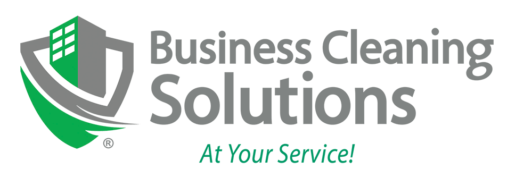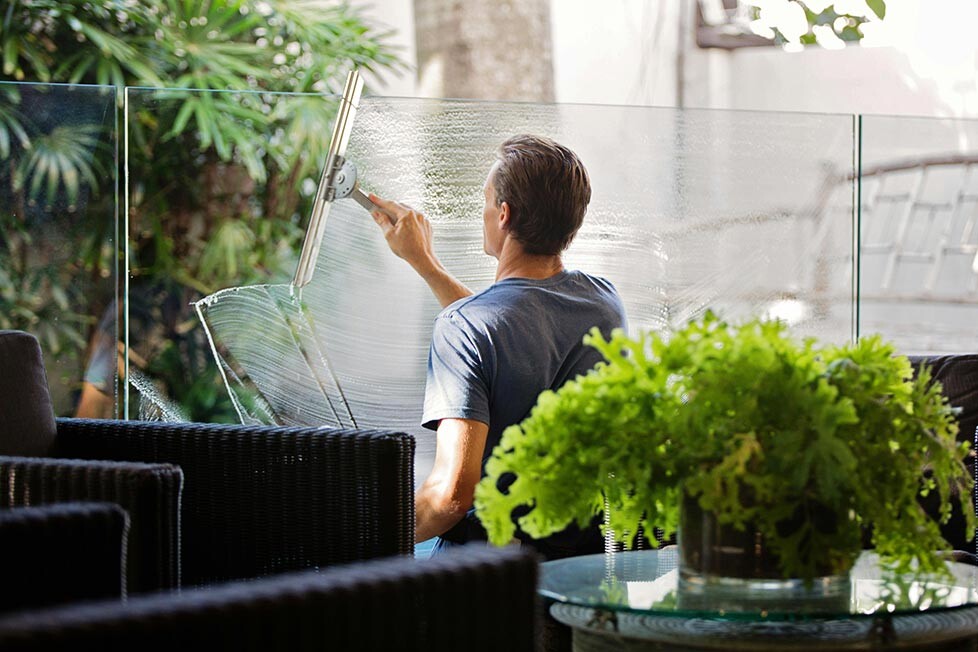When a client or customer walks up to your building, one of the first things they notice isn’t always your sign — it’s your windows. Clean, streak-free glass communicates professionalism, attention to detail, and pride in your business. On the other hand, smudged, dusty, or water-stained windows can quietly undermine your company’s image, no matter how great your products or services are.
Commercial window cleaning isn’t just about aesthetics — it’s about protecting your investment, extending the life of your glass, and maintaining a healthy indoor environment. Regular, professional cleaning helps prevent damage from environmental buildup, reduces allergens, and ensures natural light can flow freely throughout your workspace.
In this guide, we’ll share the most effective commercial window cleaning tips—from selecting the right tools to establishing a maintenance schedule that preserves both appearance and performance. Whether you manage a retail store, an office building, or a large facility, these insights will help you achieve spotless results and long-term value.
1. Understand Why Commercial Window Cleaning Matters
Before diving into techniques and tips, it’s important to understand why window cleaning deserves a regular place in your maintenance plan.
A. First Impressions and Brand Image
Windows are visual extensions of your brand. Clean glass conveys trustworthiness, organization, and pride in your space. For businesses like offices, restaurants, or retail stores, sparkling windows can directly influence customer perception and even drive more foot traffic.
B. Protecting Glass Surfaces
Dirt, pollutants, and mineral deposits from hard water gradually etch into glass surfaces, causing permanent damage if not removed. Regular cleaning prevents this buildup and extends the lifespan of your windows — reducing replacement costs over time.
C. Maximizing Natural Light
Clean windows let in more sunlight, improving employee mood and productivity while reducing dependence on artificial lighting. Natural light can make spaces look more open and inviting — key for both customers and staff.
D. Promoting a Healthier Environment
Windows can collect allergens, dust, and pollutants that affect indoor air quality. Consistent cleaning removes these contaminants and contributes to a healthier workplace overall.
2. Choose the Right Tools and Cleaning Solutions
A. Professional-Grade Tools Make All the Difference
For commercial settings, it’s essential to use high-quality, professional-grade window cleaning equipment. Common tools include:
- Squeegees: The foundation of streak-free cleaning. Choose stainless steel or brass squeegees with replaceable rubber blades for durability.
- Extension Poles: Crucial for reaching tall or large windows safely without ladders. Telescopic poles can extend to several stories high.
- Microfiber Cloths and Scrubbers: Microfiber is highly absorbent and reduces lint, ensuring cleaner finishes.
- Buckets and Holsters: Use separate buckets for cleaning solution and rinse water to prevent streaking and cross-contamination.
B. Selecting the Right Cleaning Solution
Avoid harsh chemicals that can damage glass or frames. Many professionals use eco-friendly, ammonia-free window cleaning solutions that are safe for staff and building materials. A simple mix of purified water and a mild detergent often provides excellent results.
For eco-conscious businesses, green-certified cleaning agents help meet sustainability goals while maintaining performance. These solutions are particularly beneficial for LEED-certified buildings or companies prioritizing environmental responsibility.

3. Focus on Technique: The Key to Streak-Free Results
Even the best tools won’t produce professional-quality results without proper technique. Here are some expert-approved methods:
A. Start with a Dry Dusting
Before applying any liquid, remove dust, cobwebs, and loose debris using a soft brush or microfiber duster. This prevents smearing and ensures the cleaning solution works more effectively.
B. Apply Cleaning Solution Evenly
Use a scrubber or applicator to spread the cleaning solution evenly across the window surface. Avoid oversaturation, which can cause streaking or drips.
C. Master the Squeegee Technique
The traditional “S” motion is the gold standard for streak-free cleaning:
- Start at the top corner.
- Pull the squeegee horizontally in smooth, overlapping strokes.
- Wipe the blade with a clean cloth between each pass.
This technique ensures no residue remains and minimizes water lines.
D. Dry and Polish Edges
Use a microfiber towel to dry the window edges and sills, where excess water tends to collect. A final polish with a clean, lint-free cloth creates a crystal-clear finish.
4. Safety Protocols for Commercial and High-Rise Cleaning
Safety should never be an afterthought. Commercial window cleaning often involves ladders, scaffolding, or aerial lifts — and strict adherence to safety regulations is essential.
A. OSHA Compliance
Professional window cleaners follow Occupational Safety and Health Administration (OSHA) guidelines to ensure all work at height is performed safely and securely.
B. Equipment Inspections
Inspect all ladders, harnesses, and lift equipment before use. Regular maintenance of these tools prevents accidents and ensures compliance with safety standards.
C. Use of Water-Fed Poles
Modern commercial window cleaners increasingly use pure water-fed pole systems, which eliminate the need for ladders on buildings up to four stories high. These systems use filtered water to achieve spot-free results and significantly enhance safety.
D. Weather Awareness
Avoid cleaning windows during high winds, heavy rain, or extreme temperatures, which can increase the risk of injury and compromise cleaning results.
5. Address Common Window Cleaning Challenges
Not all windows are created equal — and neither are the problems that come with them. Here’s how to handle some of the most frequent challenges in commercial cleaning.
A. Hard Water Stains
Hard water leaves behind mineral deposits that can be difficult to remove. Use a mild acid-based cleaner or a professional-grade hard water stain remover, taking care not to damage glass coatings.
B. Grease and Grime Buildup
For windows near kitchens or industrial facilities, use degreasing agents designed for commercial use. A two-step process — degrease, then clean — ensures clarity and shine.
C. High Windows and Difficult Angles
For upper-story or skylight windows, extendable poles and water-fed systems provide safe and efficient access without scaffolding or ladders.
D. Seasonal Challenges
- Spring: Pollen buildup and rain spots are common.
- Summer: Dust and insect marks accumulate quickly.
- Fall: Debris from nearby trees can cling to windows.
- Winter: Salt residue and condensation stains increase due to heating systems.
Scheduling seasonal cleanings keeps windows spotless year-round.
6. The Importance of a Regular Cleaning Schedule
Consistency is key to maintaining clean, clear windows that reflect your company’s professionalism.
A. Tailored Cleaning Frequencies
Different facilities require different cleaning frequencies:
- Retail Stores and Restaurants: Weekly or bi-weekly to maintain a spotless storefront.
- Corporate Offices: Monthly or quarterly to balance appearance with budget.
- Industrial Facilities: Varies based on dust and production levels.
B. Preventive Maintenance
Regular window cleaning prevents etching and staining caused by airborne pollutants, saving money in the long term by avoiding costly glass replacement.
C. Scheduling During Off-Hours
For minimal disruption, schedule cleaning after hours or on weekends. This ensures safety and convenience for both employees and customers.

7. Why Professional Window Cleaning Is Worth the Investment
While some businesses attempt in-house cleaning, the difference between amateur and professional results is often visible immediately.
A. Expertise and Efficiency
Professional cleaners bring years of experience, advanced tools, and refined techniques that ensure faster, safer, and higher-quality results.
B. Long-Term Savings
Regular professional cleaning prevents damage and extends the lifespan of windows and frames. Investing in maintenance now means avoiding expensive restoration later.
C. Liability and Safety Coverage
Reputable companies carry full insurance and workers’ compensation coverage, protecting clients from potential liability.
D. Enhanced Brand Image
A building with consistently spotless windows projects success, professionalism, and attention to detail — qualities that attract customers and clients alike.
8. Advanced Tips for Facility Managers and Business Owners
A. Use Deionized Water Systems
Deionized (DI) water systems remove minerals that cause spots or streaks, ensuring pure, residue-free cleaning — perfect for large glass surfaces and curtain walls.
B. Incorporate Window Cleaning into Facility Audits
Regular facility audits help identify high-traffic or problem areas before they become costly issues. Including window inspection in these audits ensures proactive maintenance.
C. Prioritize Eco-Friendly Cleaning Practices
Businesses focused on sustainability should request green cleaning solutions that minimize environmental impact without compromising effectiveness.
D. Combine Services for Better Efficiency
Bundle window cleaning with other commercial services like pressure washing, floor care, or carpet cleaning to streamline maintenance schedules and maximize value.
9. Partnering with Business Cleaning Solutions
At Business Cleaning Solutions, we understand that every building is unique — from glass type and window height to local climate and traffic patterns. Our team provides customized cleaning plans tailored to your facility’s specific needs, using eco-friendly products and advanced equipment to deliver pristine, lasting results.
We pride ourselves on:
- Consistent communication and transparent reporting.
- Trained, insured cleaning professionals.
- Flexible scheduling to minimize disruption.
- A focus on safety, sustainability, and satisfaction.
When your windows shine, so does your business — and we’re here to make sure that shine lasts.
10. Conclusion: Clear Windows, Clear Value
Clean windows are more than a finishing touch — they’re a reflection of your business standards. From improving curb appeal and protecting your investment to enhancing employee morale, regular commercial window cleaning offers measurable returns.
Instead of viewing it as a cost, see it as an investment in your business image and building longevity.
Contact us today to learn how our professional window cleaning services can help your property look its best all year long.
Frequently Asked Questions (FAQs)
1. How often should commercial windows be cleaned?
It depends on your business type and environment. Retail spaces may need weekly cleanings, while office buildings often schedule monthly or quarterly maintenance.
2. What’s the safest way to clean high-rise windows?
Professional window cleaners use harnesses, scaffolding, or water-fed pole systems to safely reach high windows while adhering to strict safety standards.
3. Are eco-friendly window cleaning products effective?
Yes. Green cleaning agents are designed to remove dirt and residue effectively without leaving harmful chemicals or streaks behind.
4. Can regular window cleaning help reduce energy costs?
Yes. Clean windows maximize natural light, reducing the need for artificial lighting and helping maintain consistent indoor temperatures.
5. Why should I hire a professional instead of cleaning windows in-house?
Professionals have the proper tools, safety training, and experience to deliver spotless, streak-free results safely and efficiently — especially for large or high-rise properties.



